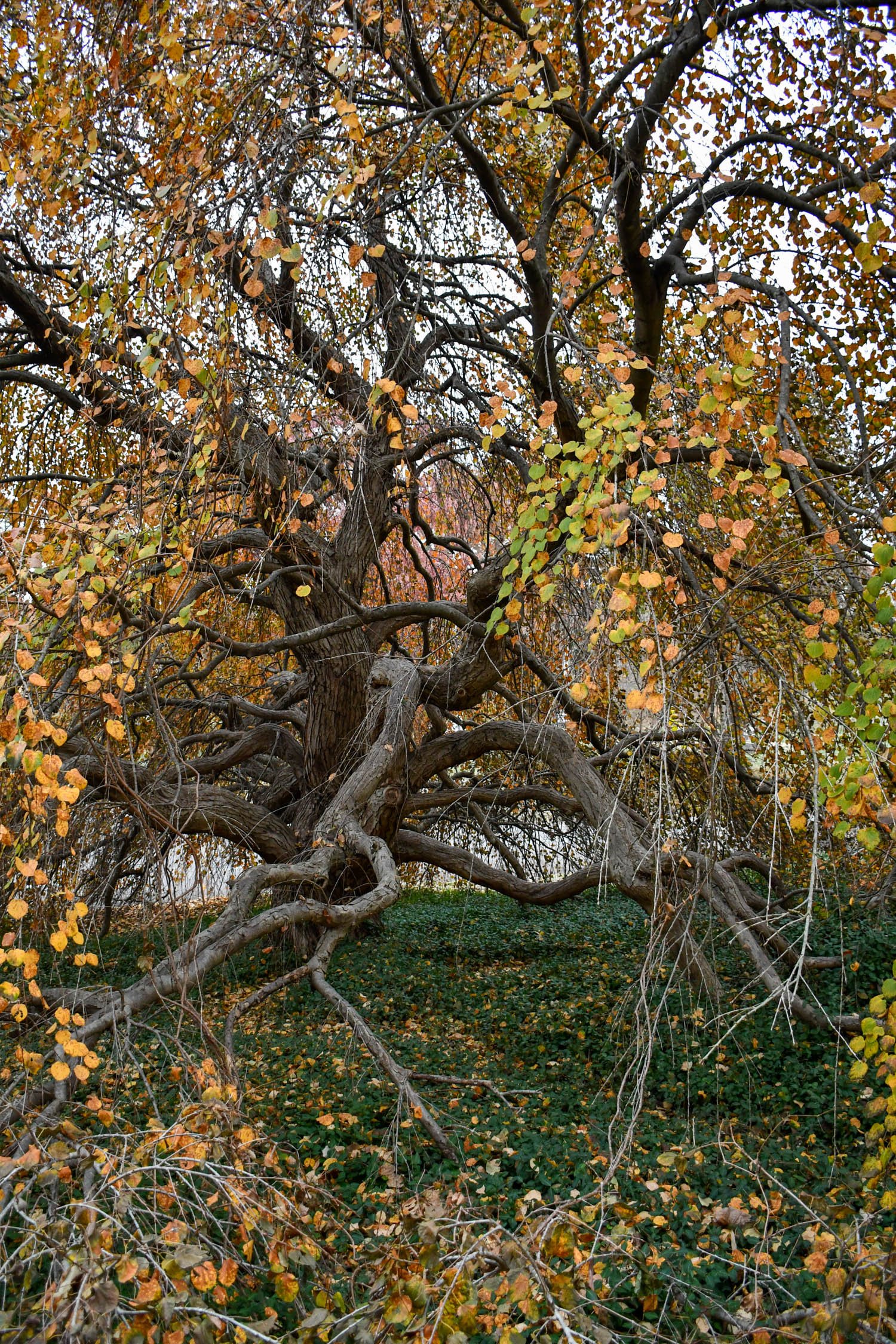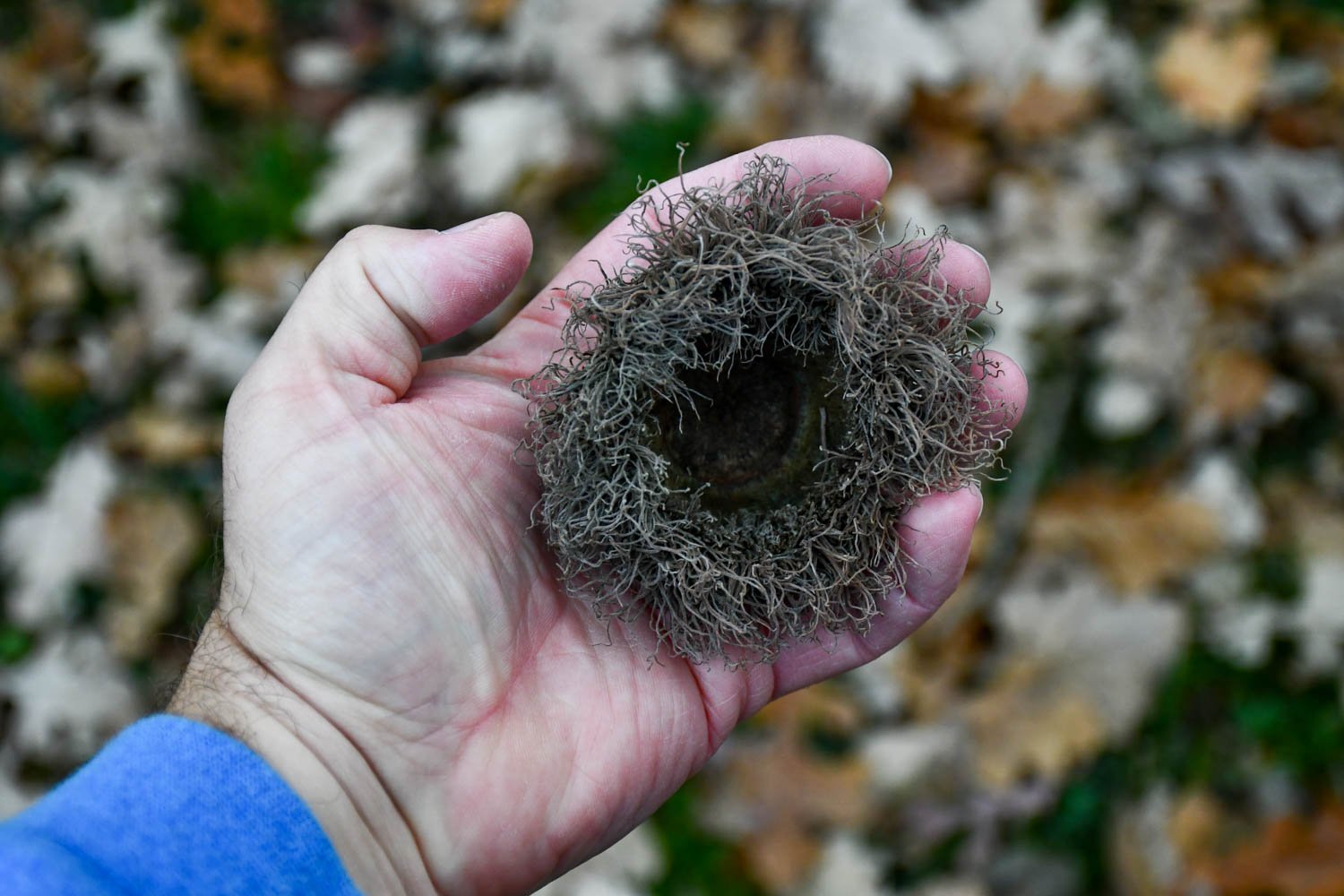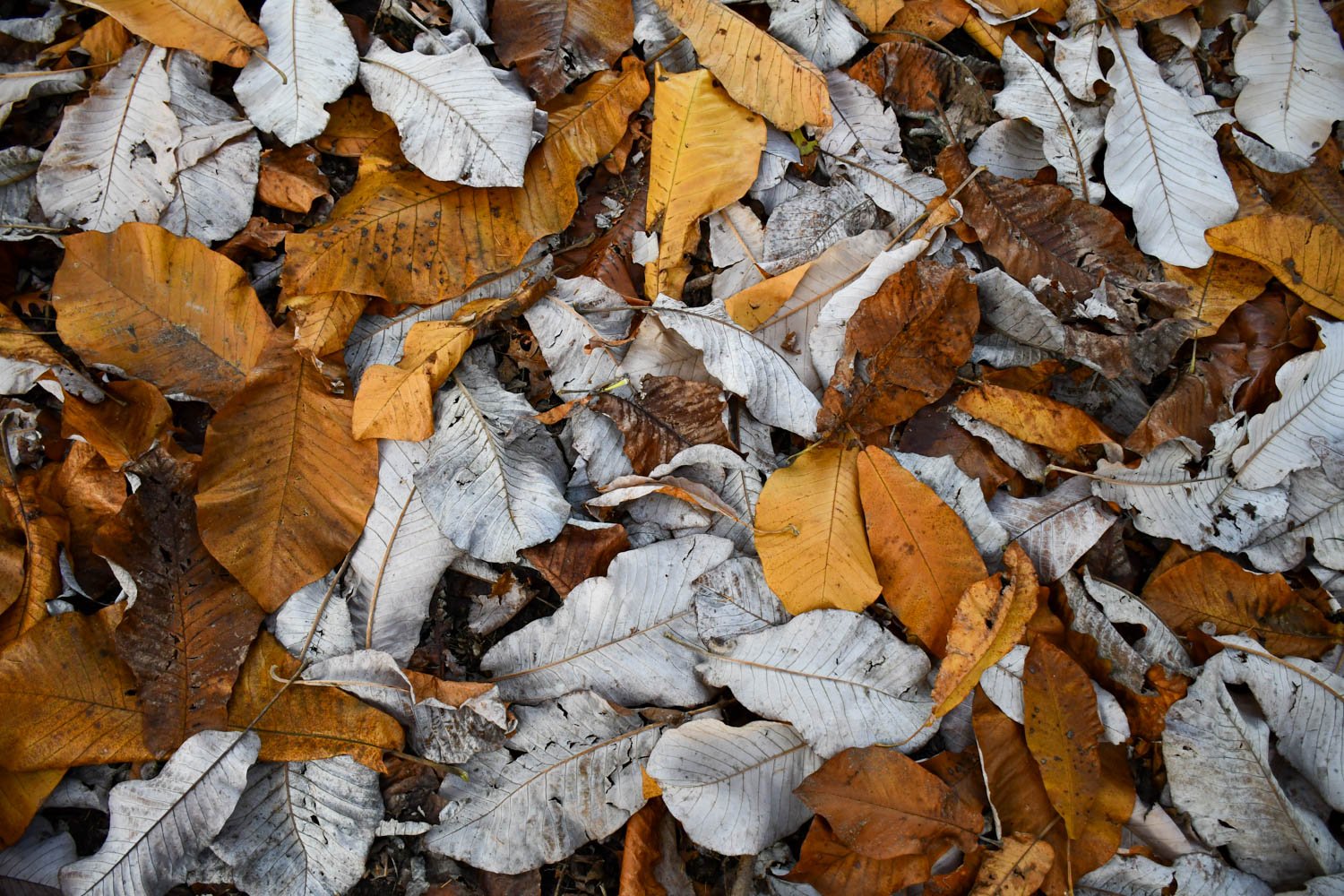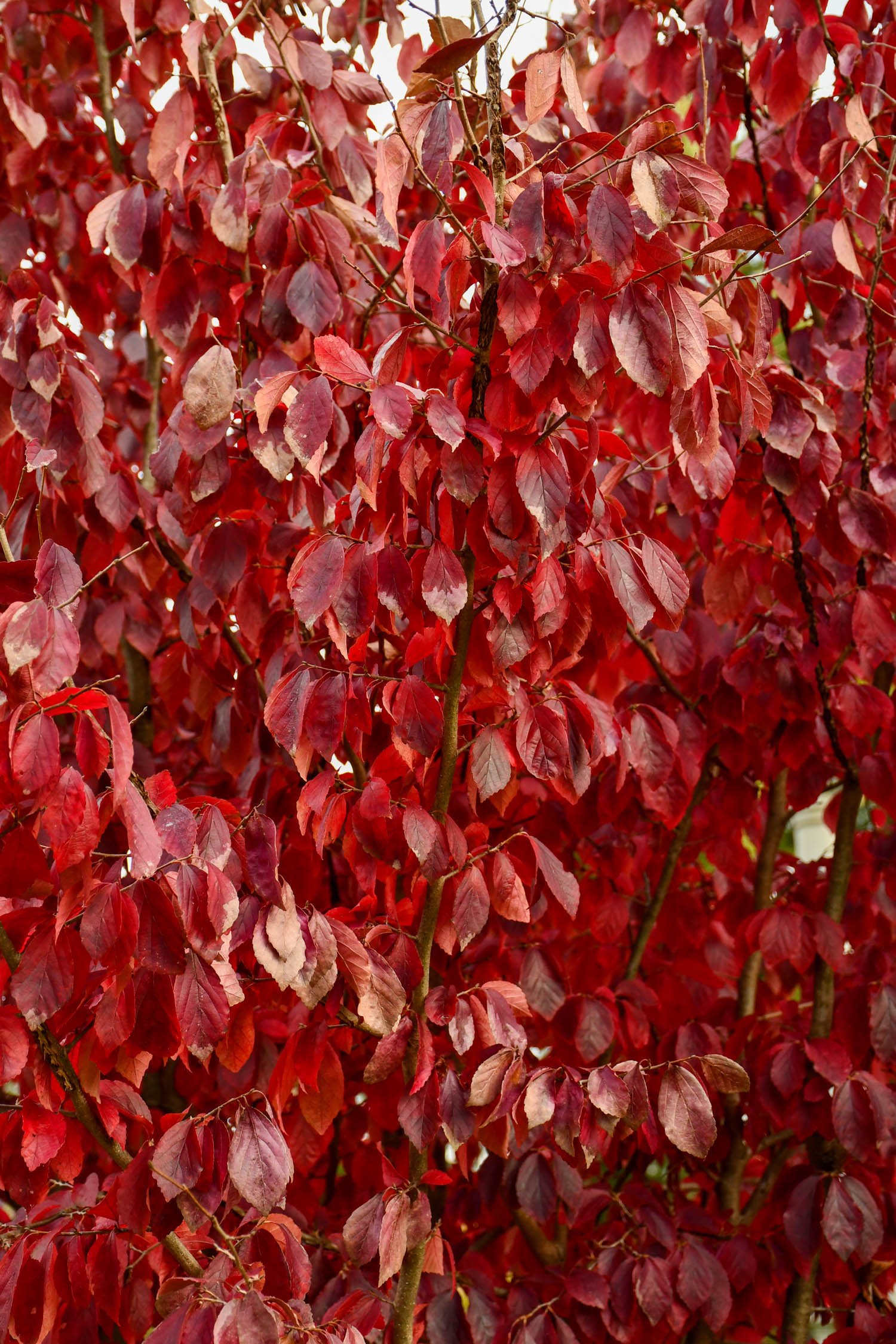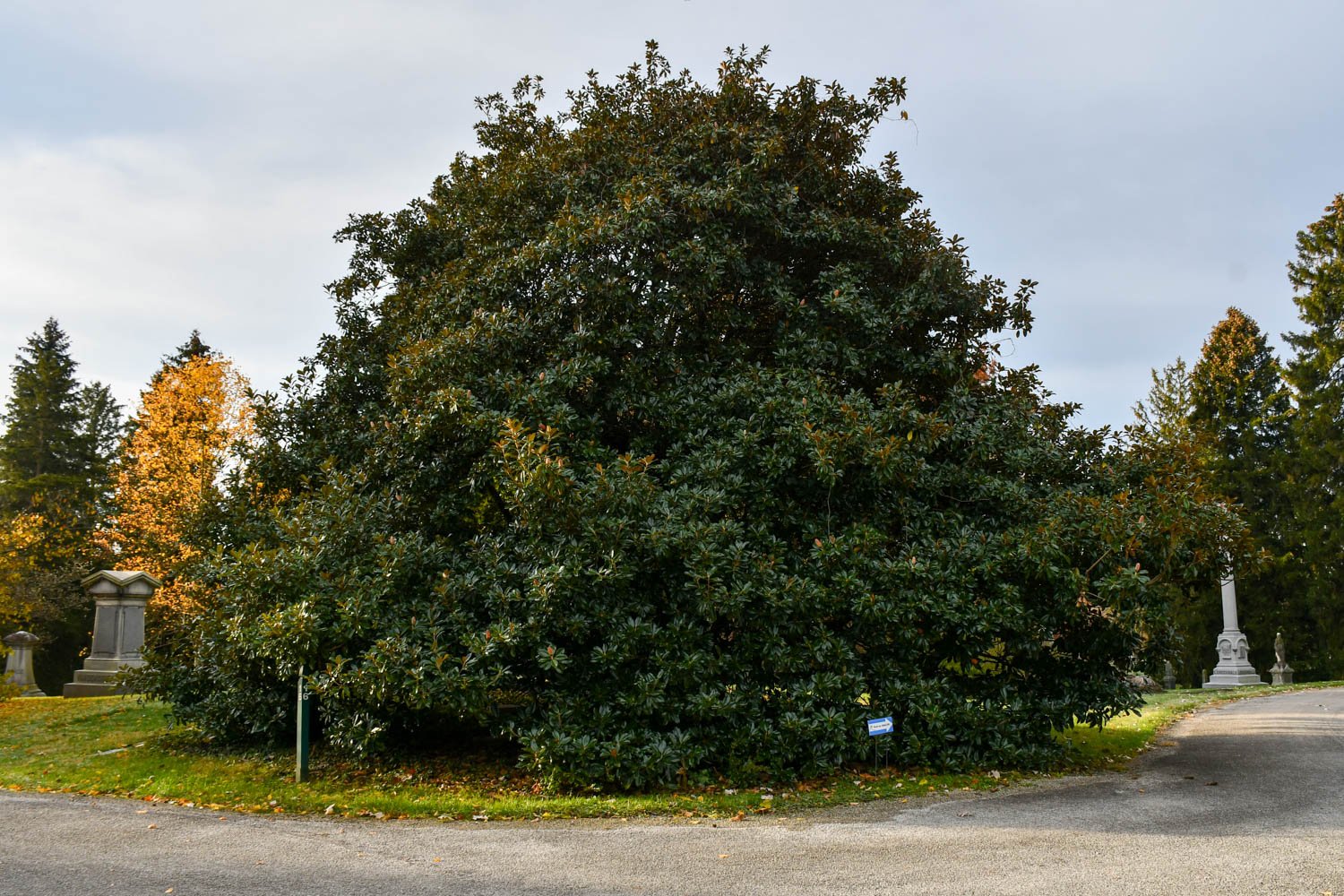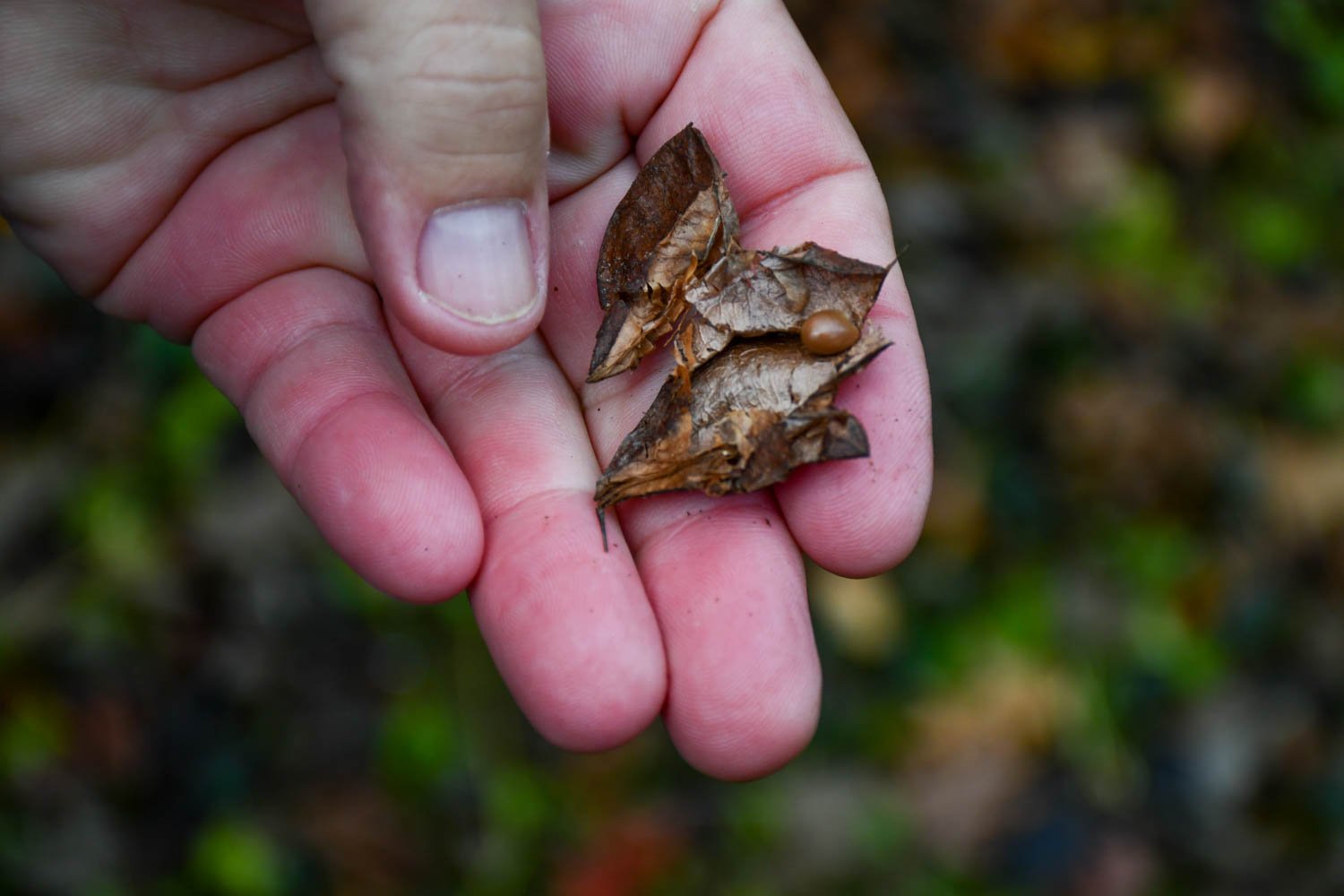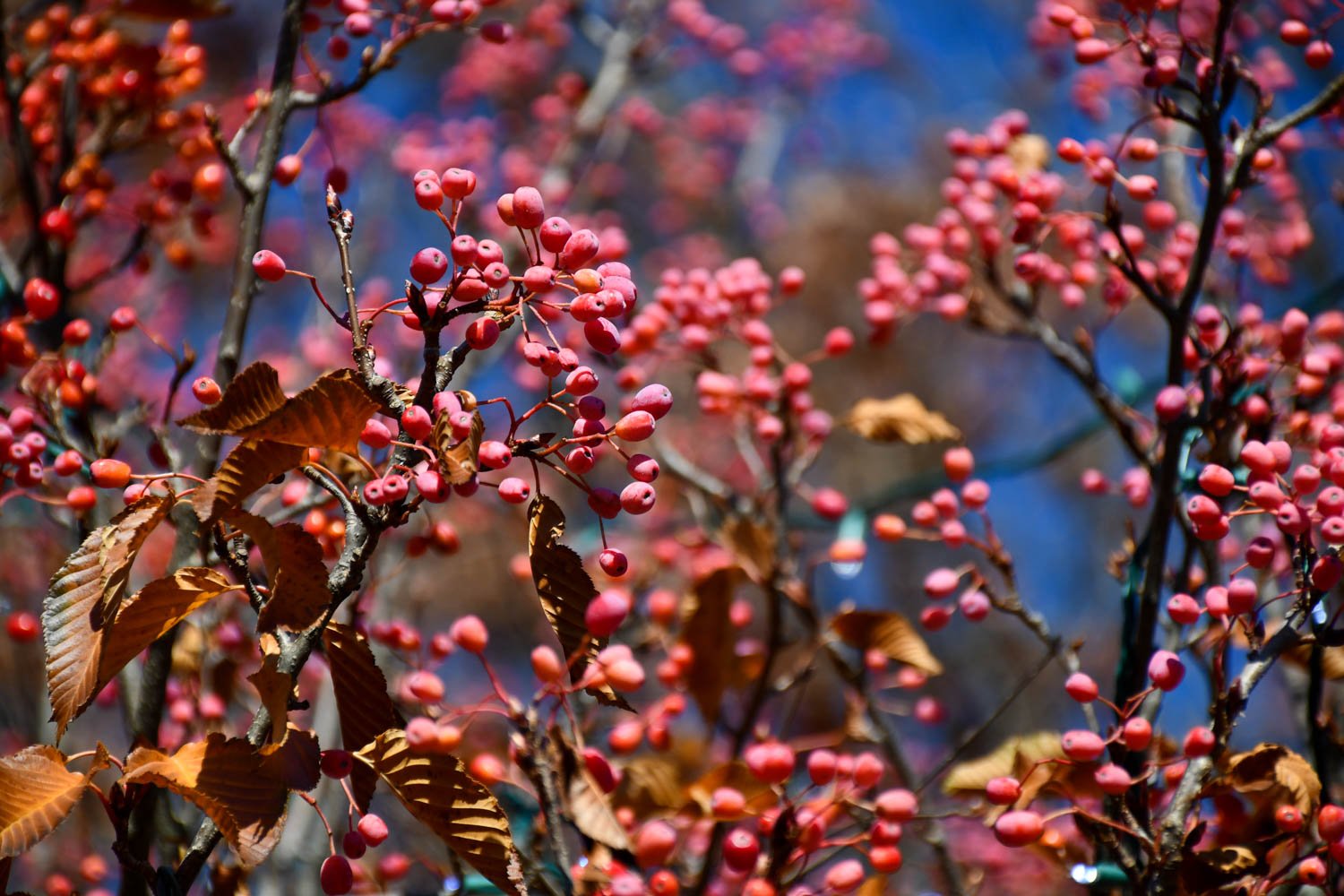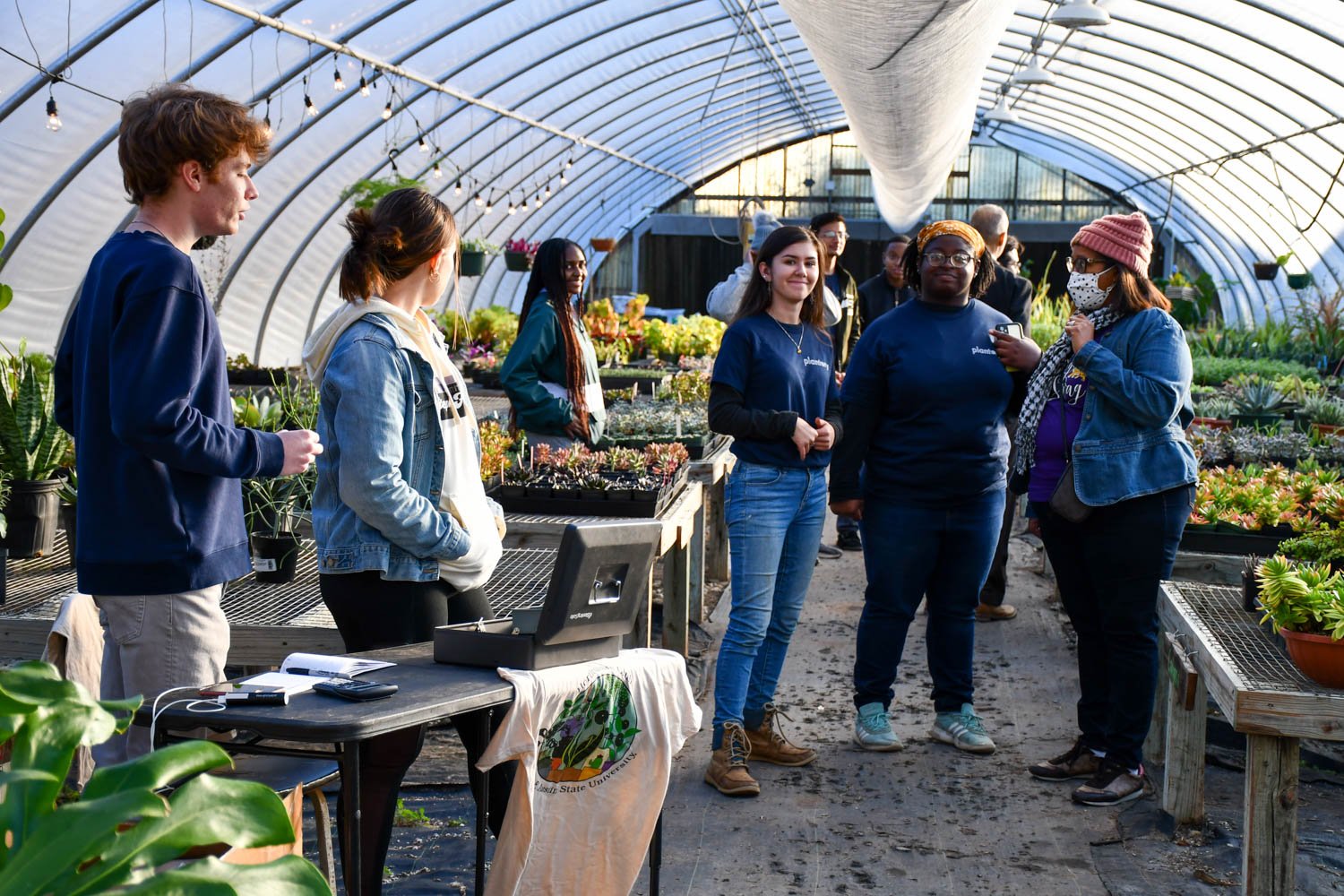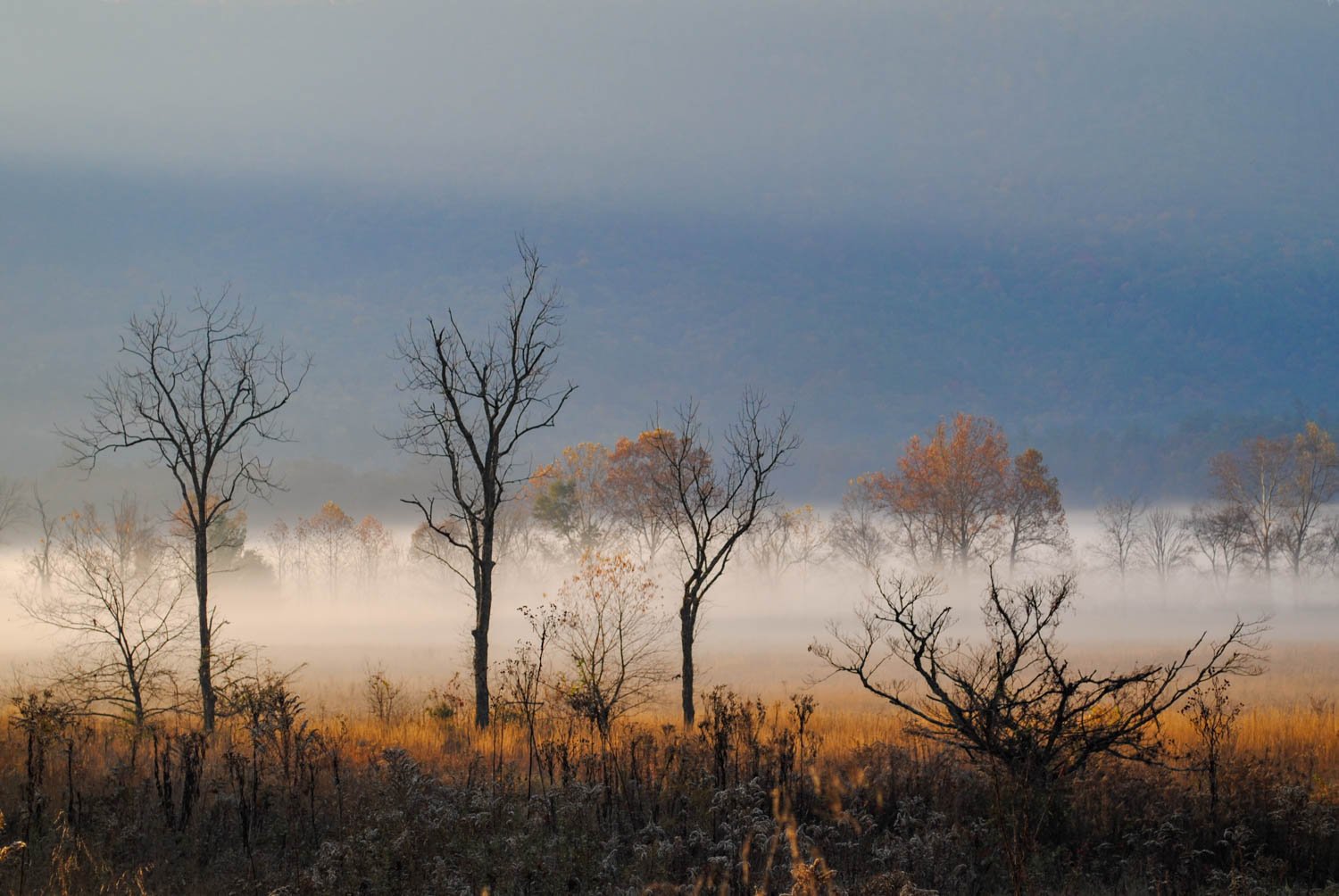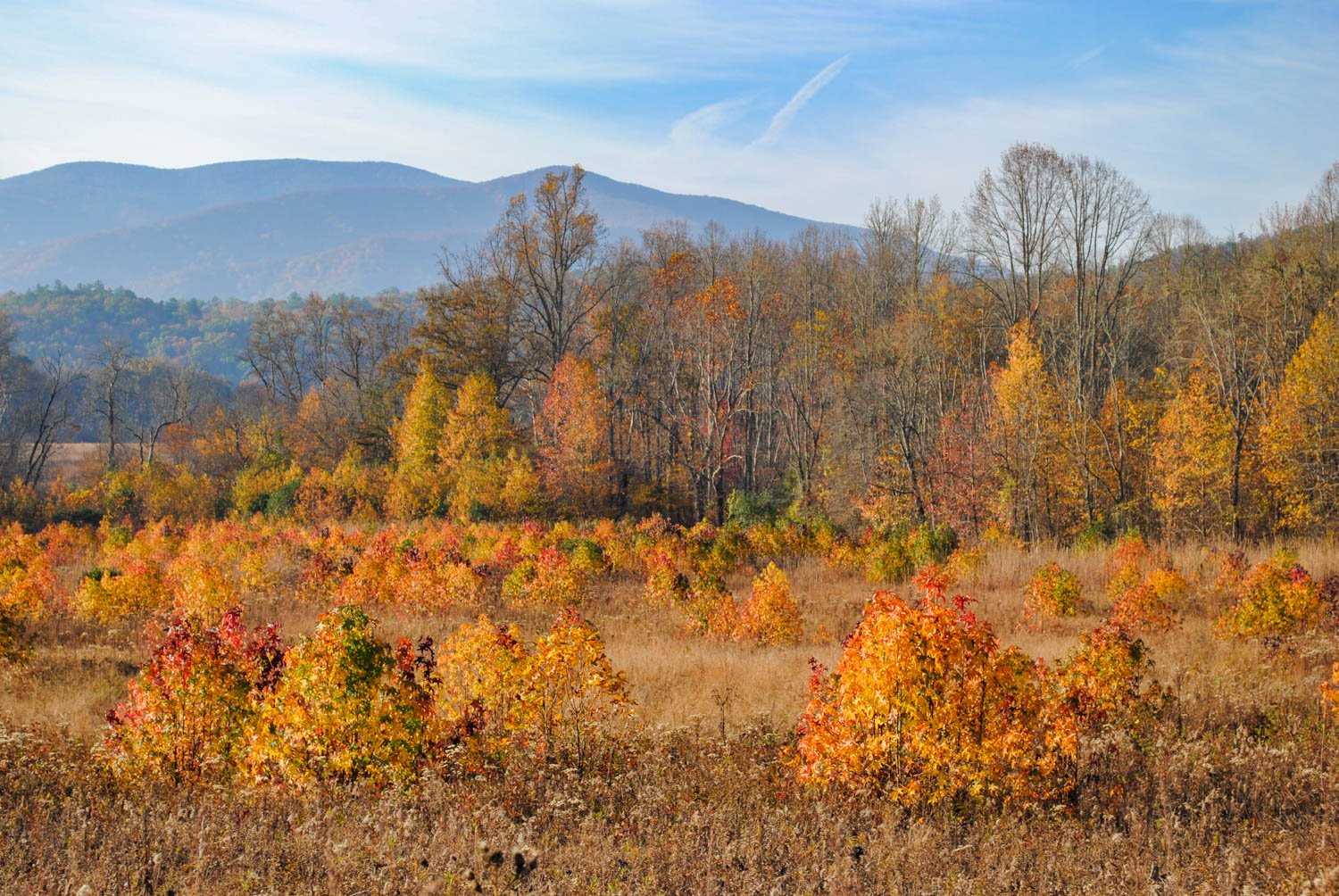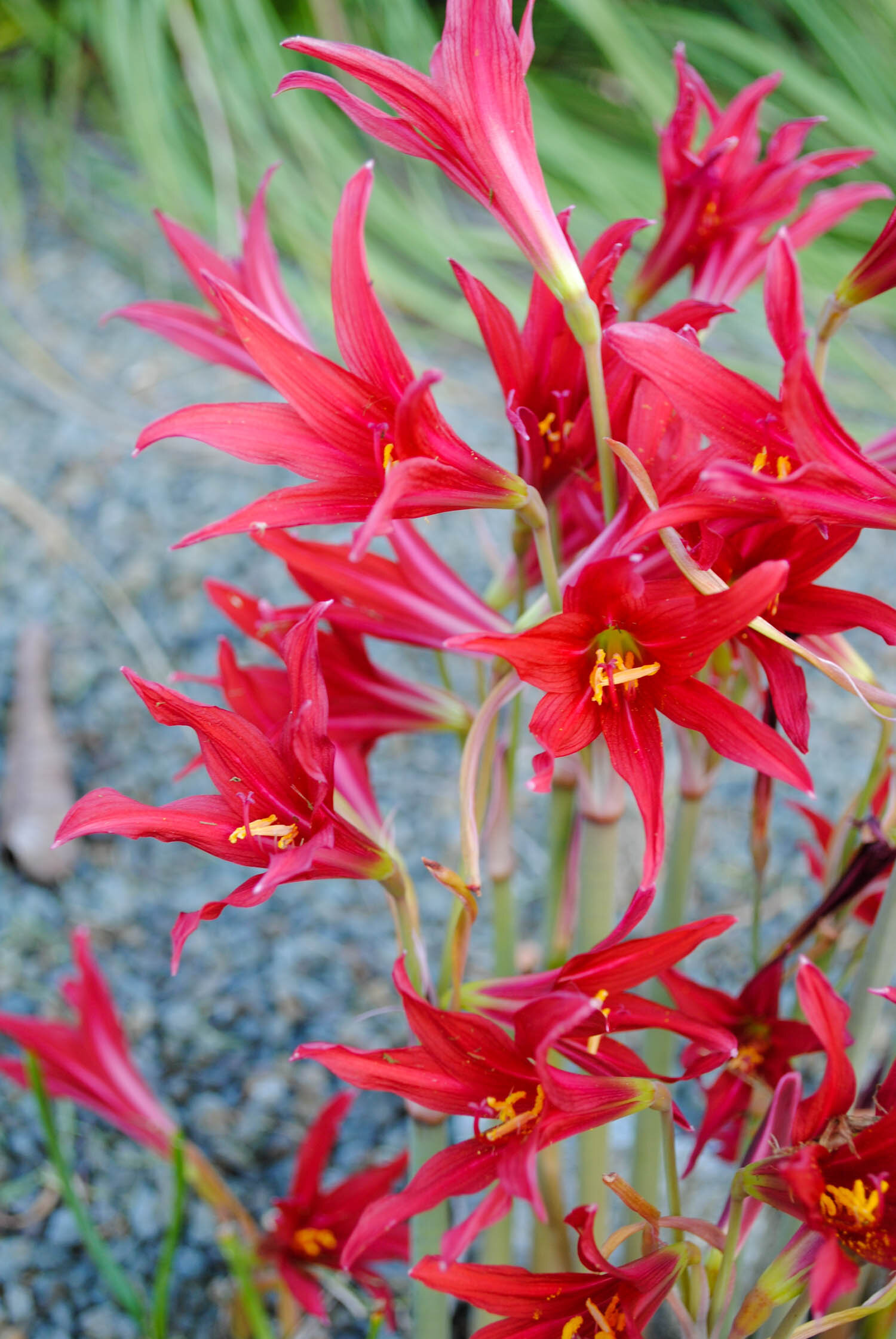“Before you leave Cincinnati, we’re going to get you to Spring Grove Cemetery.” It’s wasn’t a threat, it was an invitation to see one of the nation’s most beautiful cemeteries from Steve Foltz, director of horticulture at Cincinnati Zoo and Botanical Garden. We were talking during a break at their Plant Trials Day Symposium I spoke at in mid-November.
It’s not everyday that I hop in the car with a guy I just met, especially with the invitation to go to a cemetery. But, I could already tell that Steve was a gentle giant and a force of horticulture in Cincinnati. After my presentation, he gave a talk about how he and his team at the botanical garden were transforming less fortunate areas of Cincinnati with gardens and the impact they were having on connecting kids with horticulture. They were sharing the love of plants. These were my people.
And, Spring Grove rang a bell in the deep recesses of my mind. It was a name I had heard over the years in plant circles and read about here and there in Dirr’s Manual of Woody Landscape Plants. I wasn’t sure what the cemetery would offer post-frost, but I jumped at the chance to see more horticulture in the area.
The next morning, I met him downstairs at 7:00 AM. My friend and colleague Paul Westervelt of Saunders Brothers joined us as we piled into the car in the pre-dawn twilight. (And, a note that his quotes blow are my paraphrasing of his comments.)
At the cemetery, Steve parked right beyond the entrance at a large grove of Ginkgo and Taxodium just as dawn was breaking. “This is a female so watch your step,” Steve advised as we tip toed amongst the leaf and seed litter to avoid stinking up the car. Steve told us that he knew the 750-acre cemetery well and that he taught plant id classes here as an adjunct professor for a local college. He told us that we wouldn’t be able to see it all, but that he would give us a taste of some of the best trees the cemetery had to offer.
A giant Ginkgo biloba greets us near the cemetery entrance.
At this first stop he wanted to show us the amazing pneumatophores on a Taxodium grove near a small pond. I asked Steve to be a scale for them and he obliged.
Steve Foltz stands to provide scale of the Taxodium knees. You can’t even tell he’s hiding a breakfast bagel.
Steve went on to explain that the cemetery dated back to 1845, and that much of the design and beauty of this special place can be traced to Adolph Strauch’s efforts to beautify the cemetery. Adolph Strauch was a gardener who became superintendent of the cemetery in 1855, and he had European horticulture training. Much of what we saw in the landscape started with his vision to make Spring Grove as beautiful as possible.
From here he took us to see the state champion Taxodium distichum. Hedera helix had grown up the sides; Steve said about ten years ago they cut the root system on it, but the ivy still lived. He said that Taxodium weren’t native to Ohio, so this would have been planted here when the cemetery was first established or possibly before that.
The Ohio state champion Taxodium distichum
A close up of the trunk of the state champion Taxodium distichum. You can see the cut ivy stems.
We walked a short distance to see Cercidiphyllum japonicum ‘Amazing Grace’, a lovely form of weeping katsura tree. Living in the south my encounters with this plant were few. I had only smelled the cotton candy odor the autumn leaves emit once on a perfect day at the JC Raulston Arboretum, and it was faint. However, here I caught distinct whiffs of cotton candy and burnt sugar coming from the leaves as I paced back and forth on the frosted grass, sniffing the light breeze for the best scent.
“This one is the smaller one. Let me take you to see the bigger one,” Steve said.
Cercidiphyllum japonicum ‘Amazing Grace’ on the right. The weeping architecture is a great ploy to mimic the flow of water.
So, we got in the car, drove a little bit and hopped out again at stop two. Steve warned us there would be several of these stop-and-gos. “You have to be careful because if you start walking from tree to tree, you’ll quickly get far from your car.” (I’ve numbered the stops to help you follow along, reader.)
We parked near an ancient looking Cercidiphyllum japonicum ‘Amazing Grace’. “I ask students how old do you think this tree is, and they say a few hundred years. Looking back at records it was either planted in 1976 or 1978. It’s only a little over 40 years old!” It was amazing to see such contorted, gnarly growth in such a short time.
Around the corner was a sunset orange Quercus alba. “Make sure you see the bark in the top of the tree. It looks like shingles.”
This Cercidiphyllum japonicum ‘Amazing Grace’ looks over a hundred, but it’s less than half a century old.
A glimpse inside the veil of foliage on Cercidiphyllum japonicum ‘Amazing Grace’ shows the beautiful contorted architecture.
The leaves of Cercidiphyllum japonicum ‘Amazing Grace’ had an interesting patchwork color appearance.
A stately Quercus alba in fall glory
Exfoliating Quercus alba bark
Then, Steve directed us to a tree where he encouraged us to look on the ground. There we found massive involucres that could only belong to Quercus macrocarpa, the bur oak. “You have to come early because people will come and collect these right after they fall in early autumn,” Steve said. Most of them had been taken, but we were still able to find a few on the ground.
Quercus macrocarpa involucre looks like a bird’s nest, no?
We piled in the car again, and went to our third stop so that Steve could show us Cornus florida ‘Grovflor’ SPRING GROVE dogwood. “This cultivar originated here in Spring Grove. It is really interesting because on many branches it has two or three buds on the end of the stem instead of just one. This trait results in the tree being covered in flowers in the spring. It also has good fall color.”
Cornus florida ‘Grovflor’ SPRING GROVE showing its red-orange fall color.
Steve holds a branch of Cornus florida ‘Grovflor’ SPRING GROVE so that we can see the multiple flower buds. While most in this shot only have one bud, you’ll see a few tips with two, and one tip (middle-top of the image) with three buds.
Back in the car again, Steve promised that we would really like the next tree at stop four. And, oh did we. My mouth gapped open like I was in the movie Cloudy with a Chance of Meatballs at the sight of a 40-foot-tall and at least as wide Magnolia macrophylla. This Magnoliaphile scurried over to take photographs. Steve shared, “We call this one the sister tree since it is a sister to another one in the cemetery. Germination of seeds from it have been around 98% while others in the cemetery are around 40%.” It was amazing to stand underneath and have this shower of golden light pour over me. And, the leaf litter was insane. It looked like Times Square on New Year’s Eve. At least it’s all compostable.
Paul Westervelt and Steve Foltz provide a scale for the largest Magnolia macrophylla I have ever seen.
While I love these Magnolia macrophylla leaves, I could see this being a maintenance nightmare.
At stop five where we saw another large Magnolia macrophylla, Steve showed us an interesting Acer saccharum cultivar called ‘Sweet Shadow’. It had more dissected leaves that gave it a coarser texture.
Good fall color on Acer saccharum ‘Sweet Shadow’
Here you can see the more dissected leaves of Acer saccharum ‘Sweet Shadow’
We travelled from here to another location. “There’s your Parrotia subaequalis,” Steve said at our sixth stop. I had just mentioned the day before in my talk that this fairly new tree introduction deserves wider use, and Steve was saying that so far it had performed well into autumn. “It’s looked like that for a month,” Steve said in reference to the brilliant crimson.
Nearby Steve pointed out a nice mature form of weeping Carpinus betulus called ‘Vienna Weeping.’
A young Parrotia subaequalis
A close up of the incredible fall color on Parrotia subaequalis
A nice mature form of Carpinus betulus ‘Vienna Weeping’
At stop seven we saw a lovely Magnolia grandiflora. I wasn’t blown away from seeing a random southern magnolia in Ohio, but I was mildly surprised to see it outside of its native range and away from the coast. Steve said that this one was particularly nice because it survived the frigid 1976/1978 winters as well as ‘Bracken’s Brown Beauty’ had. He said it was introduced into the trade as Magnolia grandiflora ‘Spring Grove #16’ since it was located in plot 16 in the cemetery.
Magnolia grandiflora ‘Spring Grove #16’ had a lovely wide growth habit.
We then walked a bit to find one of the largest Zelkova serrata I’ve ever seen in fall glory. Steve shared more about the cemetery design here. He told us there were no fences in the cemetery, and their absence was inherent from the beginning. That way trash didn’t blow and collect in parts of the cemetery. Instead, it was designed to feel like a cohesive whole.
Paul Westervelt provides good scale for this glowing Zelkova serrata.
We then headed to our next location at stop eight to see the state champion Cercidiphyllum japonicum. Unlike the two ‘Amazing Grace’ we had seen, it was bare of leaves and a giant with multiple stems arising out of base of the tree and long arms reaching out.
The Ohio state champion Cercidiphyllum japonicum.
Back in the car again, we drove to stop nine to see the end of performance from Ginkgo biloba ‘Autumn Gold’. The tree had dropped nearly all its leaves and created a blanket of gold. I felt like Scrooge McDuck, wanting to swim in the little golden coins. I commented on how neat it was that the golden leaves were reflecting the color back onto the trunk of the tree. Steve pondered, “Yea, but how do you capture that,” as if to say that unless you were here experiencing that wonder, it would be hard to share. Maybe my photo below will do justice.
Isn’t this just breathtaking?
Other trees in this area also had good fall color. Nearby a few Acer griseum × nikoense ‘Girard’ hybrid maples had great red-colored foliage. We walked a little further to find an Acer campestre in a shroud of yellow. And, Taxodium distichum var. imbricarium (aka Taxodium ascendens) had nearly dropped all its leaves to make a carpet of orange.
The crimson color of Acer griseum × nikoense ‘Girard’
The golden yellow of Acer campestre
While not as spectacular as the above Ginkgo, this blanket of foliage around this Taxodium was still neat to see.
We climbed back in the car, and Steve said we had one more stop until we reached of the most iconic trees in the cemetery. He pulled over, and we got out to see a grove of Abies cilicica in front of us at stop ten. For a moment with the topography and the Cilician firs, I felt transported to some far off alpine hillside. Steve walked to the back of a building and shook a shrub. “This is bladdernut (Staphylea trifolia), a really interesting native woody that you don’t see often.” He showed us these cool pods of fruit and how the plant would rattle when shook. Steve added, “If you get them at the right time when they are green, they will pop.”
A grove of Abies cilicica stands in the distance
The fruit of Staphylea trifolia
We hopped back in the car to drive a little further. And, when we arrived at our last stop number eleven, Steve told us that we were about to see a 400 year old Quercus alba. It was beautiful, stately, with an air of mystery. Who knows how many funeral processions the tree has watched over during its life time and how many souls it has comforted with its shade.
A massive 400 year old Quercus alba stands as a sentinel in Spring Grove Cemetery
Steve told us that sisters Lucy Braun and Emma Braun were buried nearby. Lucy in particular was a keen botanist, and she wrote Woody Plants of Ohio.
We hopped back into the car one last time as Steve drove us out through a lovely woodland preserve to head back to the zoo. I’m so thankful to have made a new plant friend who is willing to take a couple of hours out of his morning to show me iconic trees in an iconic cemetery. And, I can’t wait to return to Spring Grove Cemetery. As long as I stay above ground that is.







